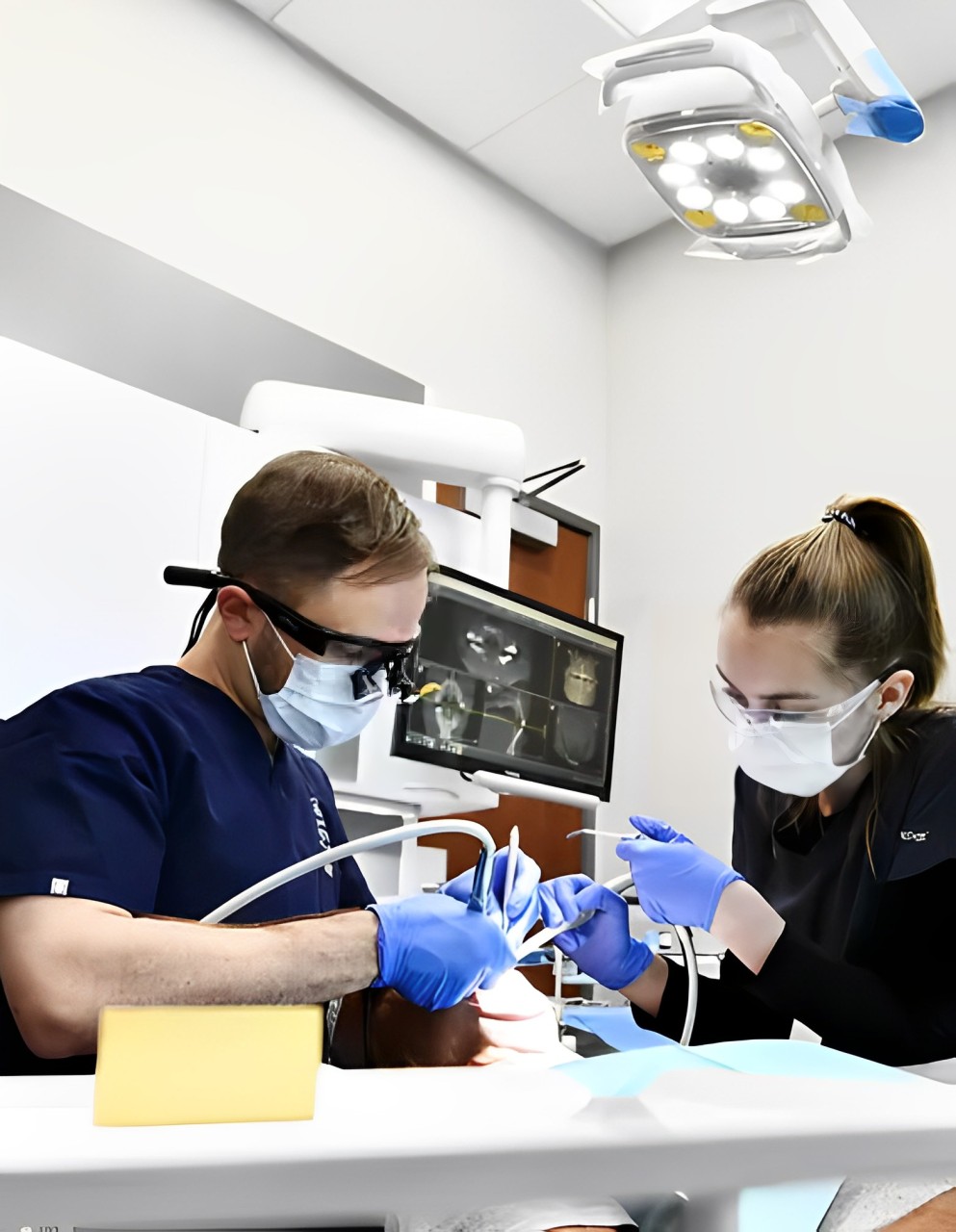
Our professional staff want only the best experience for you for any surgical procedure you may need for your dental care.
Schedule Complimentary ConsultationYou will have several choices of how you can replace the newly missing teeth. All of the options rely on bone support and bone contour for the best function and esthetics. Here is a list of the possible options:




There are two important phases in retaining your alveolar ridge during and after the tooth extraction. Not all extraction techniques are the same, some can be rather destructive of the bone around the roots. We use the most careful techniques to extract your teeth while preserving as much bone as possible. Secondly—and key to preventing the collapse of the socket—is the addition of bone replacement material to the extraction socket as well as PRF. After the tooth is extracted, the socket will be filled with a bone replacement material and covered with a small barrier of your own Platelet Rich Fibrin. Early on, the grafting material will support the tissue surrounding the socket, and in time will be replaced by your very own new alveolar bone.
Although the bone created by socket grafting supports and preserves the socket, it will not do so indefinitely. Placing dental implants 2-12 months after the extraction, socket grafting and PRF-Platelet Rich Fibrin, will provide the best long-lasting support for preserving your jawbone and allow you to function as before.
To better preserve your smile and facial structure, we encourage a graft after every extraction. When you have a tooth or teeth extracted—whether it be due to decay, abscess, gum disease or injury—it is in your best interest to preserve as much of your underlying jawbone as possible. From the time the teeth are removed, significant degeneration of the surrounding bone begins to take place. The amount of shrinkage is unpredictable. Many times the amount of remaining bone shrinks rapidly at first, followed by a more slowly progressing shrinking that occurs over the years afterwards. This shrinking is a natural process, however it is an undesirable result of removing your tooth.
You have many options to prevent the rapid initial loss of bone, and it is important that you consider them before any teeth are removed. The very best time to perform grafting and PRF (your very own Platelet Rich Fibrin) is at the time the tooth is removed. To minimize the rapid shrinking of bone, a bone graft and your PRF barrier is placed in the socket at the time we remove your tooth. This type of bone graft is straightforward and produces minimal discomfort. A bone graft after extraction can often prevent the need for major bone grafting, also called guided bone regeneration or a ridge augmentation, later on.
The slow progressive shrinking that happens over time is really only prevented by replacing your missing tooth with a dental implant—which is a titanium post that acts as a new root. The pace of this “slow” bone loss is difficult to predict and is influenced by your genetics, health and environmental factors, such as smoking.
There is a special type of bone surrounding your teeth. This bone is called alveolar bone, and exists solely to support your teeth. When a tooth is lost for whatever reason, the body’s natural response is to begin resorbing or getting rid of the bone in the area because it is no longer needed to hold the tooth in place. Your “melting away” of bone occurs in three dimensions. The first is loss of horizontal width caused by the collapse of the bone surrounding the socket. This makes the remaining ridge narrower than when your tooth was present. The second is a loss of vertical height. This makes your remaining bone less “tall.” This process is faster in areas where you wear a partial or complete denture.
Your denture may not fit properly on your lower jaw due to tori—the bony projections found underneath your tongue, or roof of your mouth. These create problems in comfort and fit of your lower denture. A simple solution for a better fitting and more comfortable lower denture is removing these bony projections.

Wouldn’t you like to speed up your healing time and reduce your risk of infection and pain after a surgical tooth extraction? We can help you achieve this with our PRF experience and technology.
We use your own Platelet Rich Fibrin (PRF) in many dental surgical procedures such as tooth extractions, dental implants and gum tissue regeneration. During oral surgery, your jawbone is exposed and there is very little blood supply in this area as compared to other tissues in our bodies. In areas where there is less blood, your body has less ability to heal quickly and fewer defenses against infection.
At Denture Artistry – Implants – Crowns – Veneers, we place PRF into tooth extraction sites and implant sites. For example, when a dental extraction is performed, we will place your very own Platelet Rich Fibrin into the tooth extraction site. In the absence of the PRF, dental extractions sites are commonly left to heal open to the oral cavity. When PRF is placed into the extraction site, the PRF protects the site from infection and enriches the area with growth factor proteins that accelerate healing. In sites where implants are placed, the PRF occupies the space between the extraction site and the dental implant. Placement of PRF in dental implant sites decreases implant healing time and decreases the chance for dental implant failure.
Contact us with any questions or to schedule an appointment. Our caring and dedicated staff can't wait to hear from you!
Schedule Complimentary Consultation